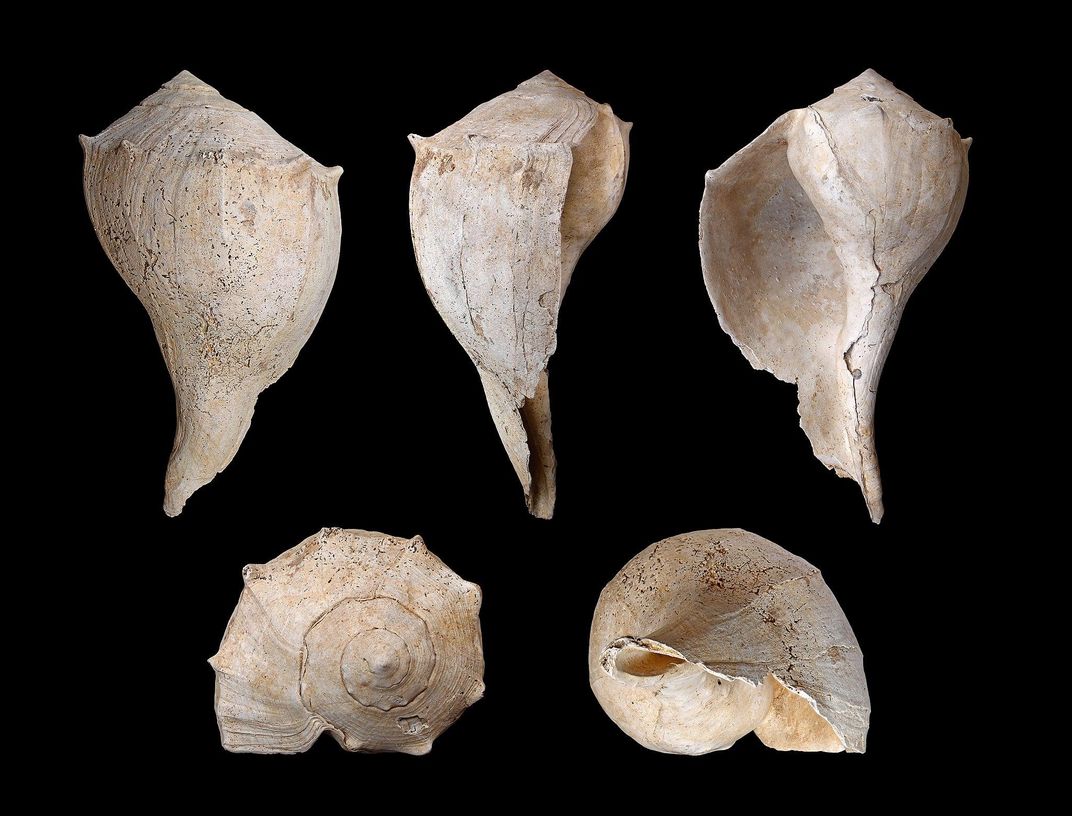Using Drone-Mounted Lasers, Scientists Find Ancient Bead-Making, Island-Dwelling Community in Florida
Archaeologists used LiDAR to spot a large settlement, where residents produced an important pre-Columbian commodity
/https://tf-cmsv2-smithsonianmag-media.s3.amazonaws.com/filer/0c/19/0c19445a-f0e9-442a-bdf2-e9a47da6530d/dronesreveal.jpg)
Raleigh Island is a long, uninhabited stretch along Florida’s Gulf Coast, where vegetation grows thick and wild. But hundreds of years ago, before Europeans first arrived in North America, Raleigh Island was home to a thriving settlement of bead-makers—a hidden history that is only starting to come to light, thanks to pioneering laser technology.
Experts have long known that humans once lived on the island; according to the Guardian’s Victoria Bekiempis, artifacts were first discovered there in the early 1990s. But archaeologists were largely in the dark about the scope of the settlement, until a happy accident occurred in 2010. Researchers conducting environmental impact surveys in the wake of the Deepwater Horizon oil spill stumbled upon a complex of ring structures made of oyster shells—signs of a once large and active community.
Archaeologists were eager to learn more, but because the foliage on the island is so dense, conducting comprehensive ground surveys would have been difficult. So a team of researchers turned to a drone equipped with Light Detection and Ranging, or LiDAR, a remote sensing method that uses a pulsed laser to create topographical maps. In the journal PNAS, the researchers claim that the discoveries unveiled by the high-tech survey are “without parallel in the Southeastern United States.”
More specifically, the LiDAR revealed 37 rings of oyster shells dating from around 900 to 1200 A.D., placing the settlement in the midst of the Mississippian culture. Some of the shell ridges stretched to 13 feet tall, and were clustered to form cloverleaf-like compounds of between six and 12 rings. Kenneth Sassaman, a co-author of the new paper and a University of Florida archaeologist, tells Kiona N. Smith of Ars Technica that each of the rings may have been “the locus of a house and household of five to eight people each," meaning that as many as 300 people may have once lived in the settlement.
The oyster rings, according to Smith, likely built up over years of people munching on sea food and tossing away the shells. But other types of shells, these belonging to a sea snail known as the lightning whelk, do not appear to have been discarded in the same way. When the archaeologists conducted land surveys in several of the rings, they found evidence that the whelk shells were being used to make beads. Such evidence includes stone anvils for making drills and stone abraders for shaping the beads, along with shell fragments and shells that appeared to have been partially or fully drilled.

Beads were a hot commodity during the Mississippian era, particularly those made from lightning whelk shells, which boast a spiral that was associated with the cycle of the sun. Isaac Schultz of Atlas Obscura reports the beads were likely used in bartering, gambling and art.
“They may have been available to everyone,” the study authors write in the paper. “Although we presume that the value of shell beads increased with distance from the source, and thus may have been a medium of economic wealth and political power far to the interior of the continent.”
This certainly seems to have been the case in Cahokia, a powerful ancient city that arose at the confluence of the Missouri, Illinois and Mississippi rivers. In one elite burial there, two bodies were found covered in more than 20,000 beads made from the shells of marine animals.
In Cahokia, lightning whelk shells seem to have been imported in their raw form and manufactured in the city, which allowed the elite to maintain control over the production of a valuable object. But not all Mississippian settlements of the North American interior would have been making their own beads; as the recent finds on Raleigh island suggest, some were likely importing them from bead-making communities along the Gulf Coast, where whelk shells are plentiful.
Archaeologists already know quite a lot about bead-making in large political centers like Cahokia, but relatively little is known about bead production closer to the marine habitats where shells were being harvested.
“We happened to find a community that’s right there at the source,” Terry Barbour, a doctoral candidate at the University of Florida and lead author of the study, tells Schultz.
The Raleigh Island settlement is also interesting because it slightly predates the emergence of chiefdoms that sat to the top of Mississippian society. Perhaps, the study authors theorize, Raleigh Islanders were among the first to supply beads to a rising ruling class. “A chiefly political economy predicated on the acquisition of nonlocal goods such as shell beads may have been stimulated by entrepreneurs at Raleigh Island,” the researchers write.
So while there is much about the settlement that archaeologists do not yet know—like whether households on the island collaborated on bead production, operated independently, or even competed with one another—the Raleigh Island discovery helps experts paint a more robust picture of bead production in the Southeast.
“[T]his place really special and as of now the only place like it we are aware of," says Barbour says in a statement.